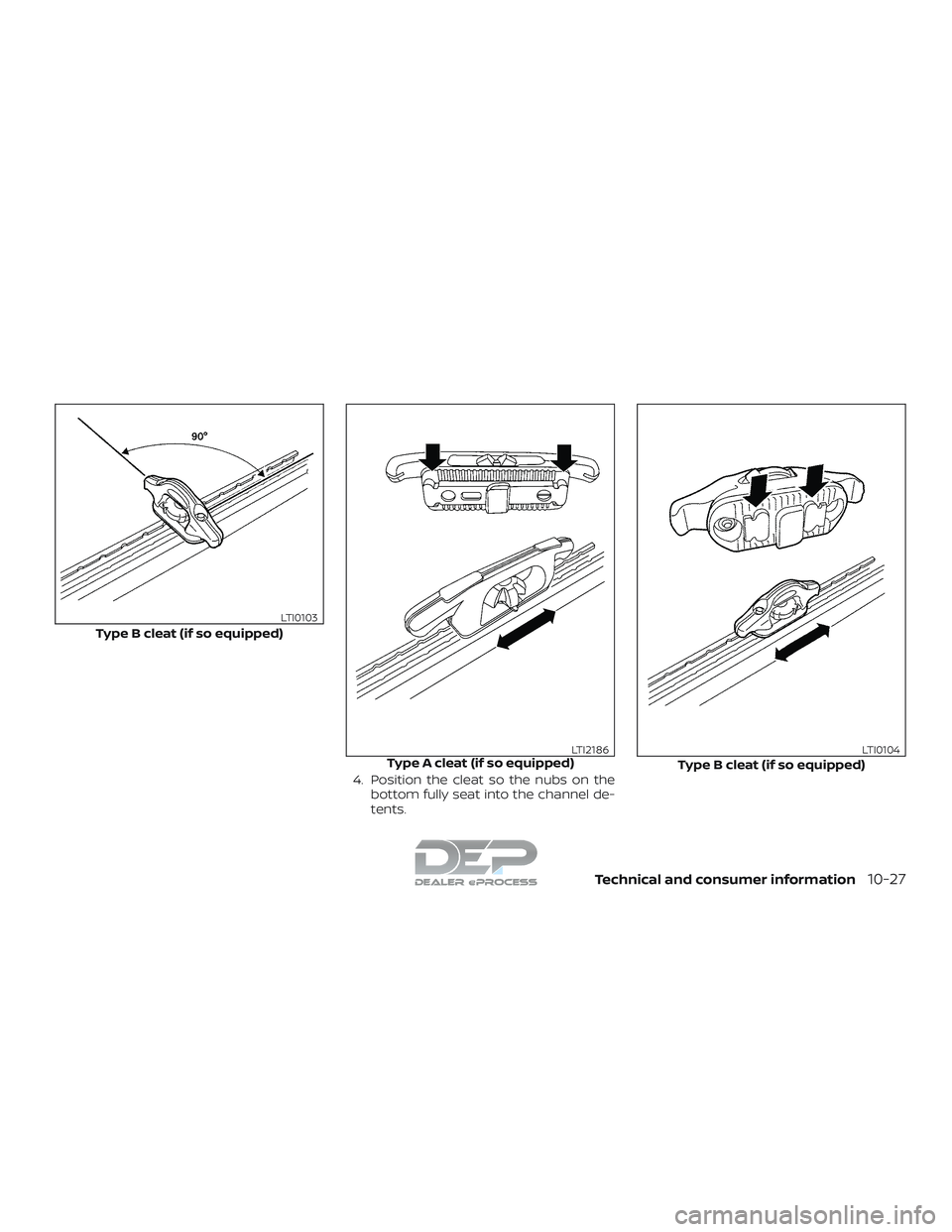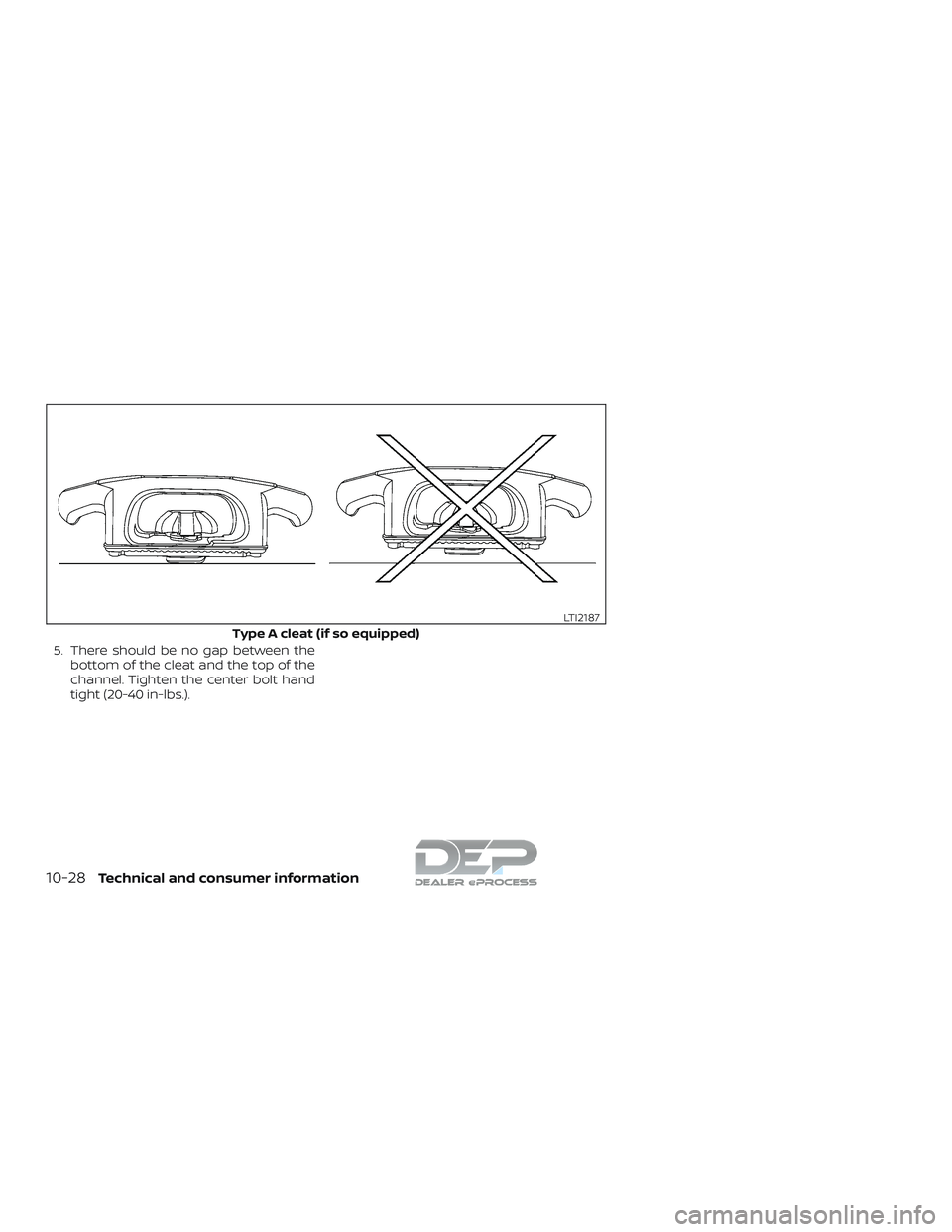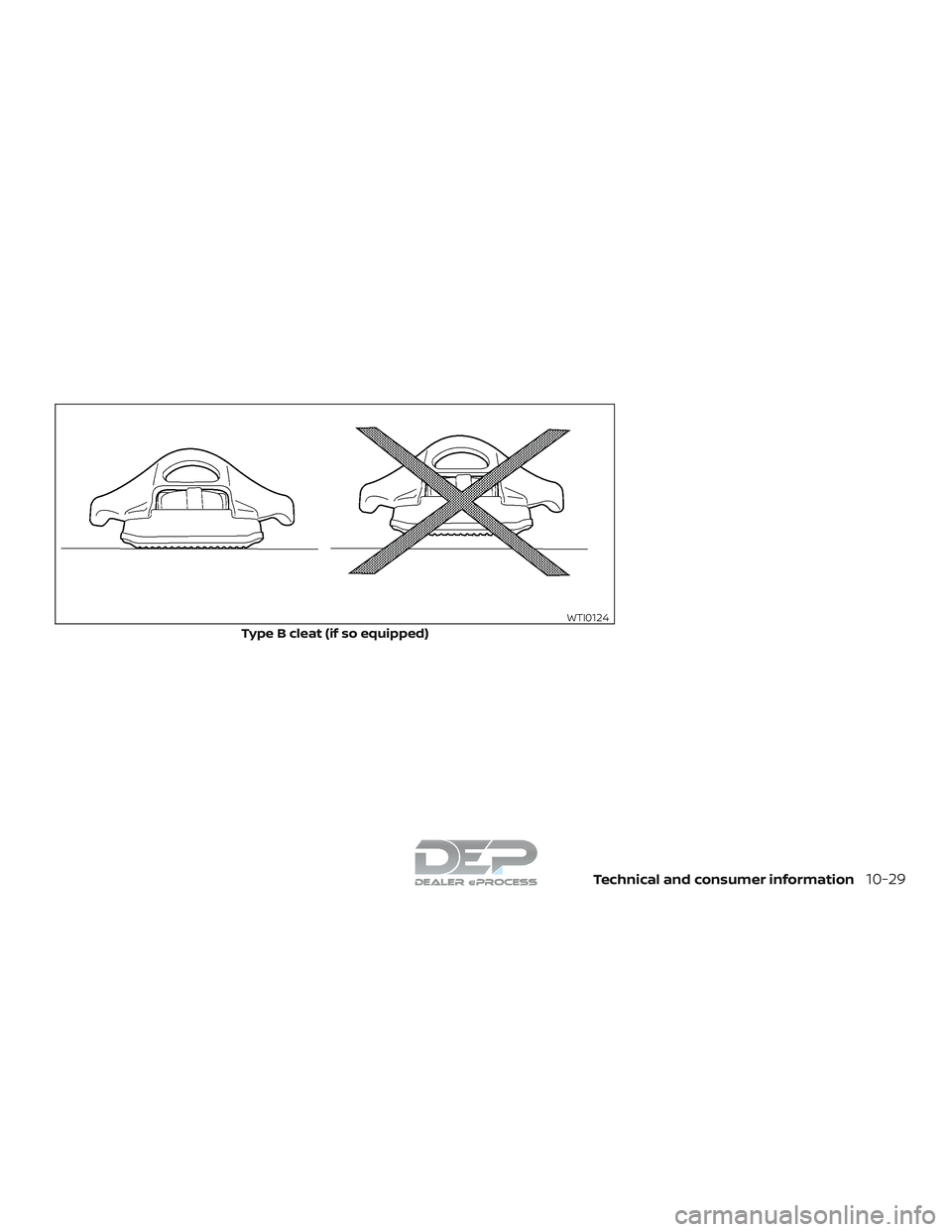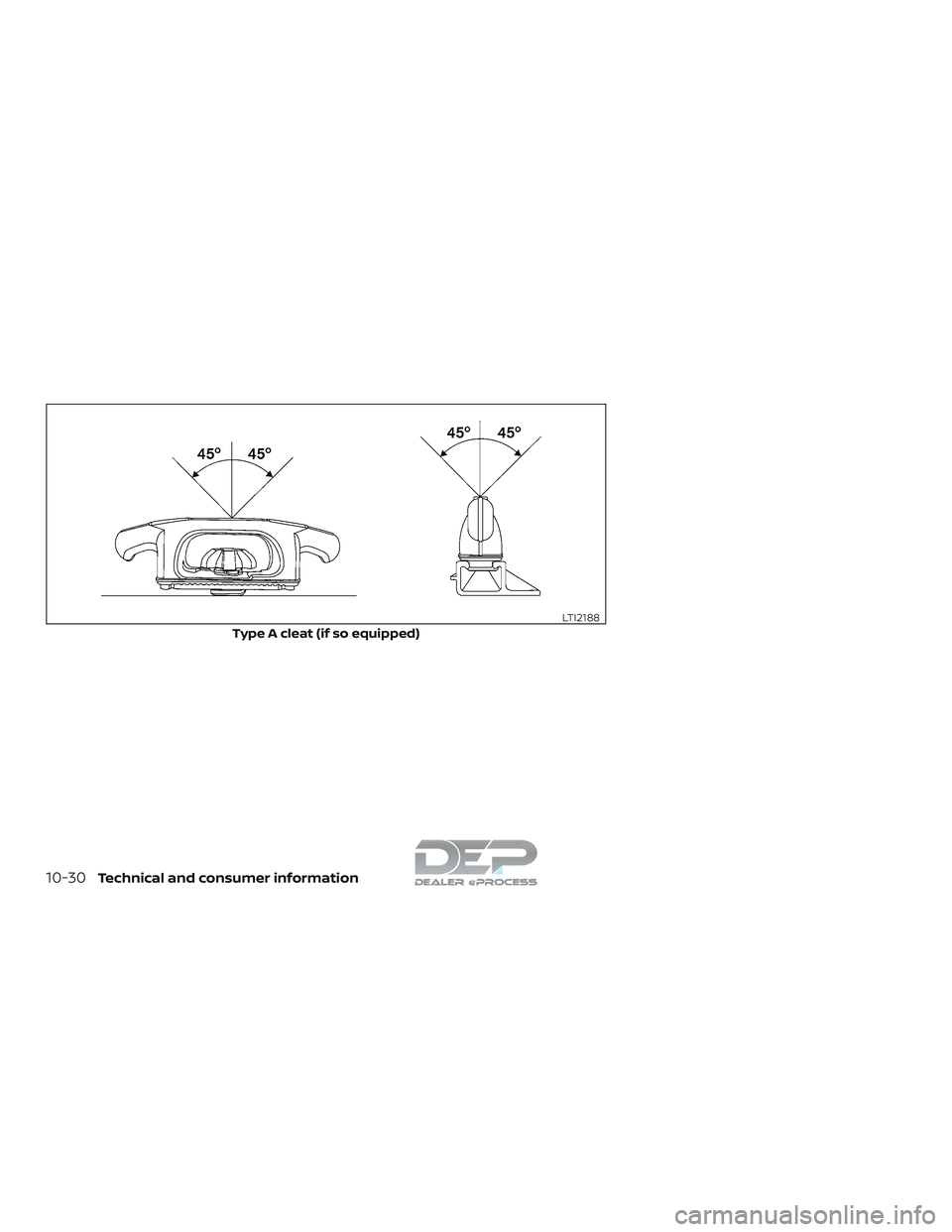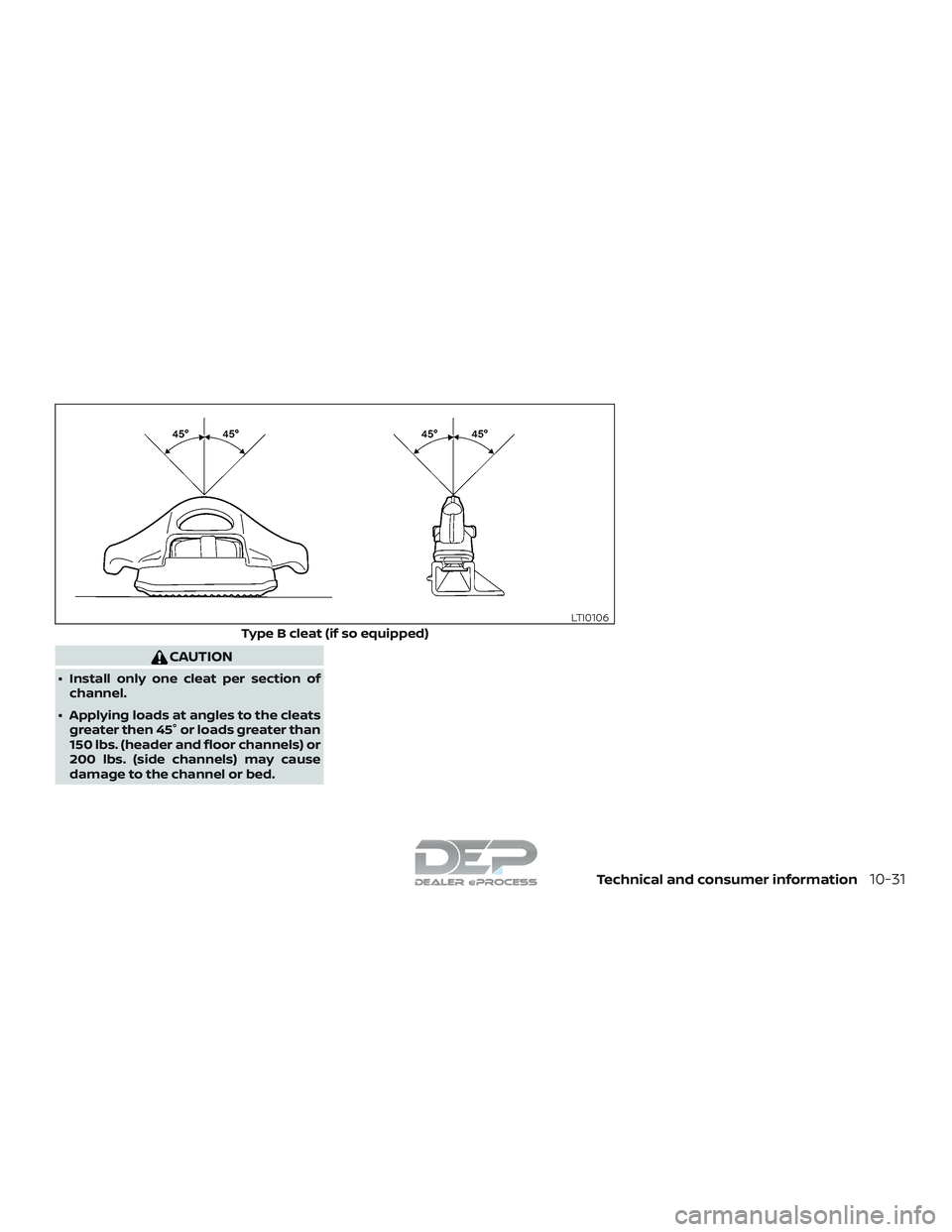NISSAN TITAN 2018 Owner´s Manual
TITAN 2018
NISSAN
NISSAN
https://www.carmanualsonline.info/img/5/40372/w960_40372-0.png
NISSAN TITAN 2018 Owner´s Manual
Trending: pairing phone, octane, child seat, oil change, wipers, center console, jacking
Page 591 of 650
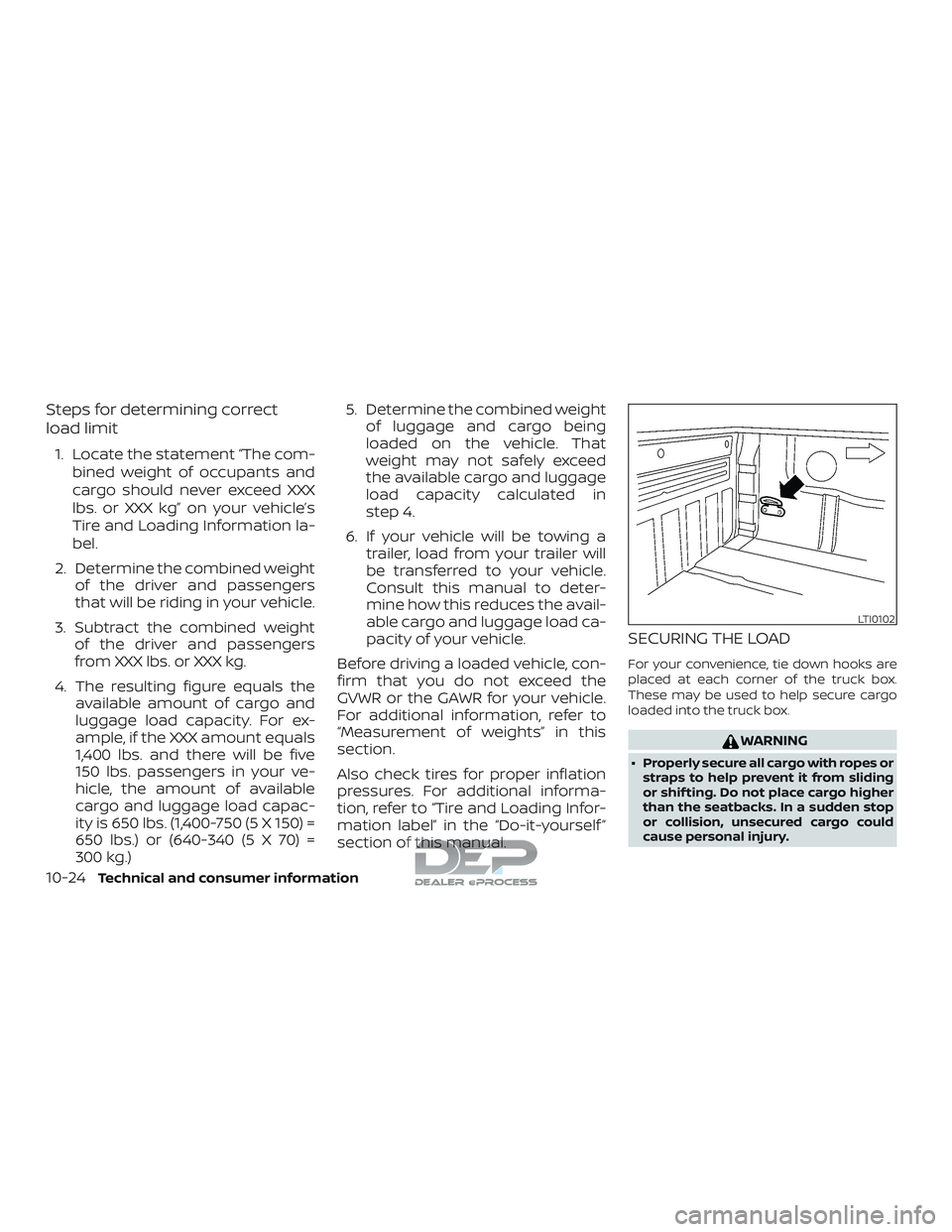
Steps for determining correct
load limit
1. Locate the statement “The com-bined weight of occupants and
cargo should never exceed XXX
lbs. or XXX kg” on your vehicle’s
Tire and Loading Information la-
bel.
2. Determine the combined weight of the driver and passengers
that will be riding in your vehicle.
3. Subtract the combined weight of the driver and passengers
from XXX lbs. or XXX kg.
4. The resulting figure equals the available amount of cargo and
luggage load capacity. For ex-
ample, if the XXX amount equals
1,400 lbs. and there will be five
150 lbs. passengers in your ve-
hicle, the amount of available
cargo and luggage load capac-
ity is 650 lbs. (1,400-750 (5 X 150) =
650 lbs.) or (640-340 (5 X 70) =
300 kg.) 5. Determine the combined weight
of luggage and cargo being
loaded on the vehicle. That
weight may not safely exceed
the available cargo and luggage
load capacity calculated in
step 4.
6. If your vehicle will be towing a trailer, load from your trailer will
be transferred to your vehicle.
Consult this manual to deter-
mine how this reduces the avail-
able cargo and luggage load ca-
pacity of your vehicle.
Before driving a loaded vehicle, con-
firm that you do not exceed the
GVWR or the GAWR for your vehicle.
For additional information, refer to
“Measurement of weights” in this
section.
Also check tires for proper inflation
pressures. For additional informa-
tion, refer to “Tire and Loading Infor-
mation label” in the “Do-it-yourself ”
section of this manual.
SECURING THE LOAD
For your convenience, tie down hooks are
placed at each corner of the truck box.
These may be used to help secure cargo
loaded into the truck box.
WARNING
∙ Properly secure all cargo with ropes or straps to help prevent it from sliding
or shif ting. Do not place cargo higher
than the seatbacks. In a sudden stop
or collision, unsecured cargo could
cause personal injury.
LTI0102
10-24Technical and consumer information
Page 592 of 650
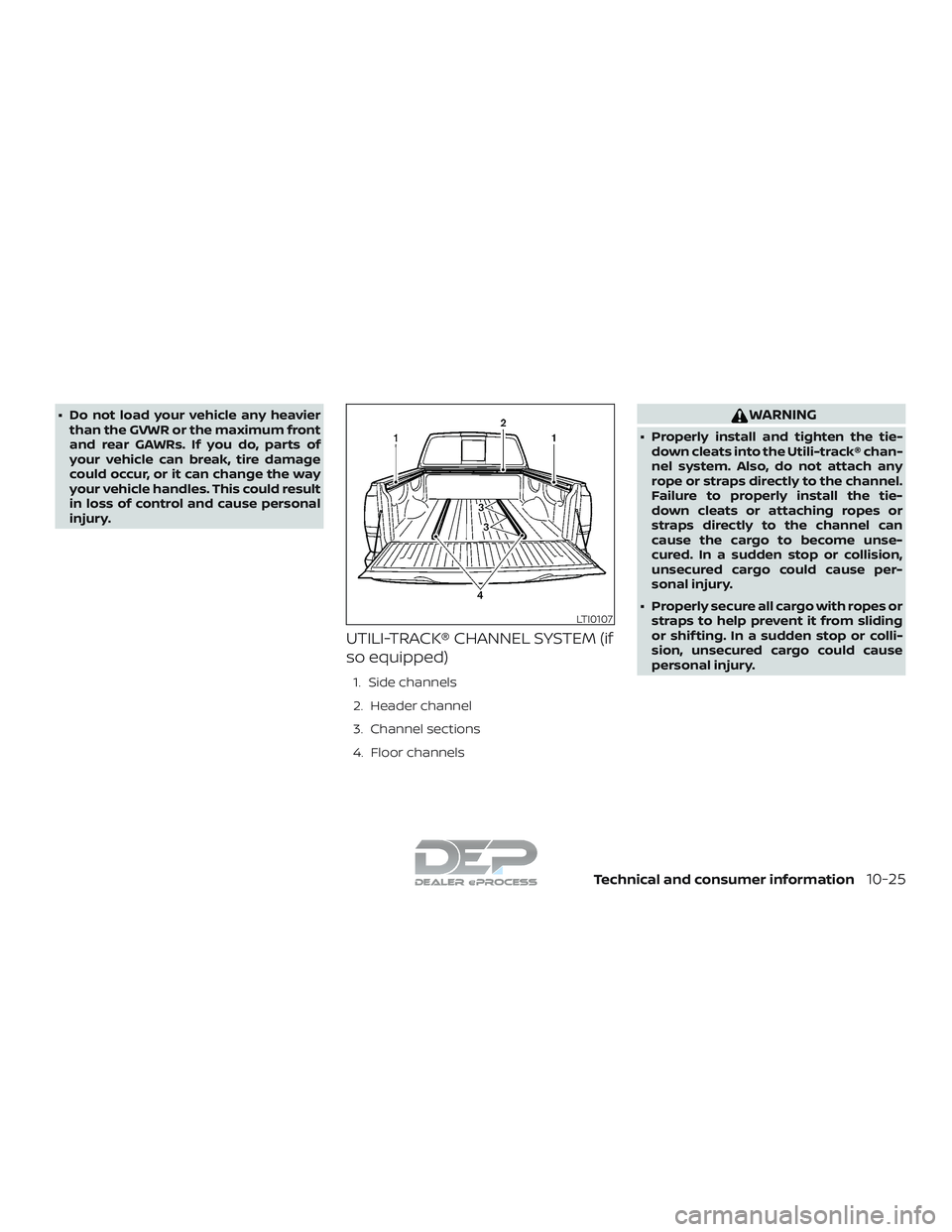
∙ Do not load your vehicle any heavierthan the GVWR or the maximum front
and rear GAWRs. If you do, parts of
your vehicle can break, tire damage
could occur, or it can change the way
your vehicle handles. This could result
in loss of control and cause personal
injury.
UTILI-TRACK® CHANNEL SYSTEM (if
so equipped)
1. Side channels
2. Header channel
3. Channel sections
4. Floor channels
WARNING
∙ Properly install and tighten the tie-down cleats into the Utili-track® chan-
nel system. Also, do not attach any
rope or straps directly to the channel.
Failure to properly install the tie-
down cleats or attaching ropes or
straps directly to the channel can
cause the cargo to become unse-
cured. In a sudden stop or collision,
unsecured cargo could cause per-
sonal injury.
∙ Properly secure all cargo with ropes or straps to help prevent it from sliding
or shif ting. In a sudden stop or colli-
sion, unsecured cargo could cause
personal injury.
LTI0107
Technical and consumer information10-25
Page 593 of 650
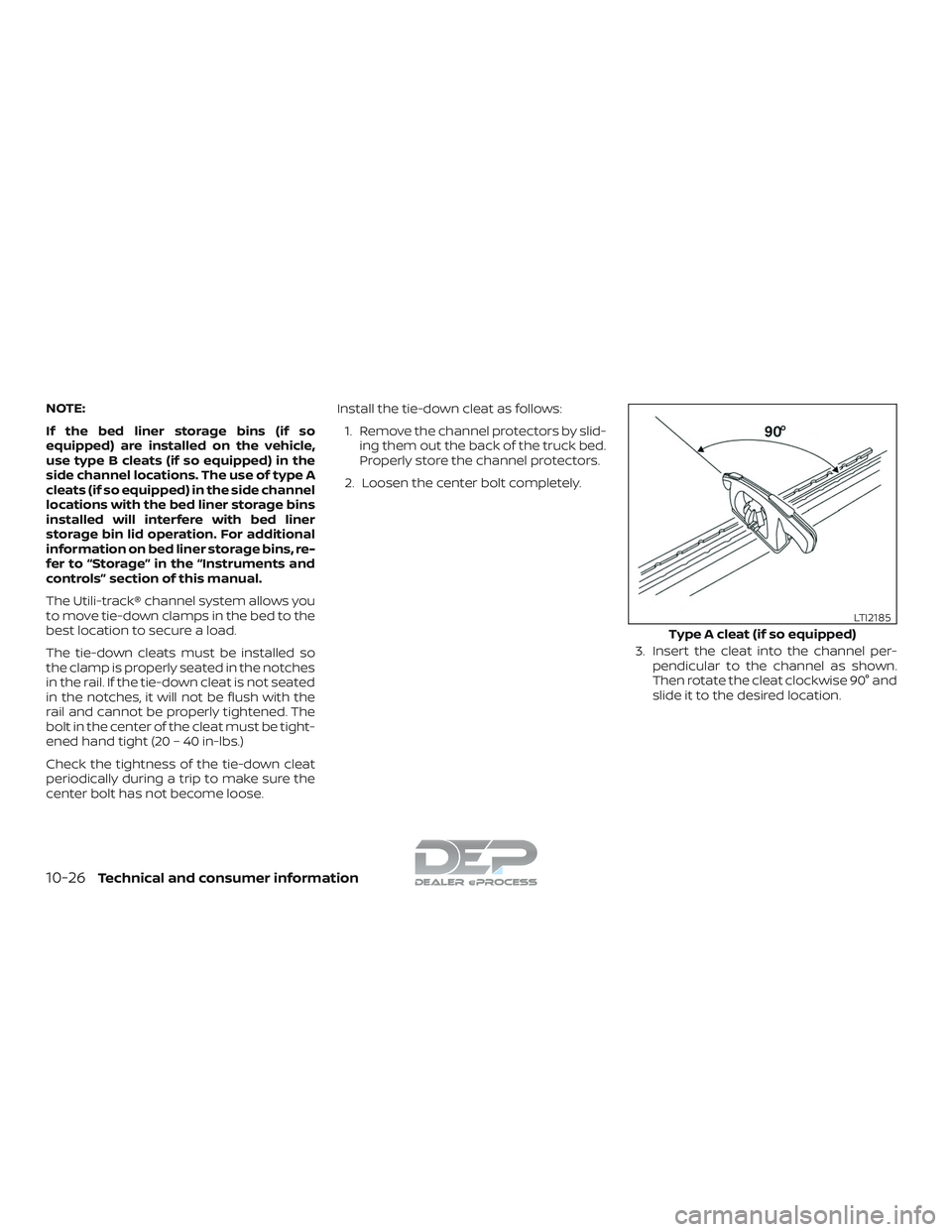
NOTE:
If the bed liner storage bins (if so
equipped) are installed on the vehicle,
use type B cleats (if so equipped) in the
side channel locations. The use of type A
cleats (if so equipped) in the side channel
locations with the bed liner storage bins
installed will interfere with bed liner
storage bin lid operation. For additional
information on bed liner storage bins, re-
fer to “Storage” in the “Instruments and
controls” section of this manual.
The Utili-track® channel system allows you
to move tie-down clamps in the bed to the
best location to secure a load.
The tie-down cleats must be installed so
the clamp is properly seated in the notches
in the rail. If the tie-down cleat is not seated
in the notches, it will not be flush with the
rail and cannot be properly tightened. The
bolt in the center of the cleat must be tight-
ened hand tight (20 – 40 in-lbs.)
Check the tightness of the tie-down cleat
periodically during a trip to make sure the
center bolt has not become loose.Install the tie-down cleat as follows:
1. Remove the channel protectors by slid- ing them out the back of the truck bed.
Properly store the channel protectors.
2. Loosen the center bolt completely.
3. Insert the cleat into the channel per-pendicular to the channel as shown.
Then rotate the cleat clockwise 90° and
slide it to the desired location.
Type A cleat (if so equipped)
LTI2185
10-26Technical and consumer information
Page 594 of 650
4. Position the cleat so the nubs on thebottom fully seat into the channel de-
tents.
Type B cleat (if so equipped)
LTI0103
Type A cleat (if so equipped)LTI2186
Type B cleat (if so equipped)
LTI0104
Technical and consumer information10-27
Page 595 of 650
5. There should be no gap between thebottom of the cleat and the top of the
channel. Tighten the center bolt hand
tight (20-40 in-lbs.).
Type A cleat (if so equipped)
LTI2187
10-28Technical and consumer information
Page 596 of 650
Type B cleat (if so equipped)
WTI0124
Technical and consumer information10-29
Page 597 of 650
Type A cleat (if so equipped)
LTI2188
10-30Technical and consumer information
Page 598 of 650
CAUTION
∙ Install only one cleat per section ofchannel.
∙ Applying loads at angles to the cleats greater then 45° or loads greater than
150 lbs. (header and floor channels) or
200 lbs. (side channels) may cause
damage to the channel or bed.
Type B cleat (if so equipped)
LTI0106
Technical and consumer information10-31
Page 599 of 650
Type A cleat (if so equipped) 1 correct installation, 2 incorrect installation
LTI2189
10-32Technical and consumer information
Page 600 of 650
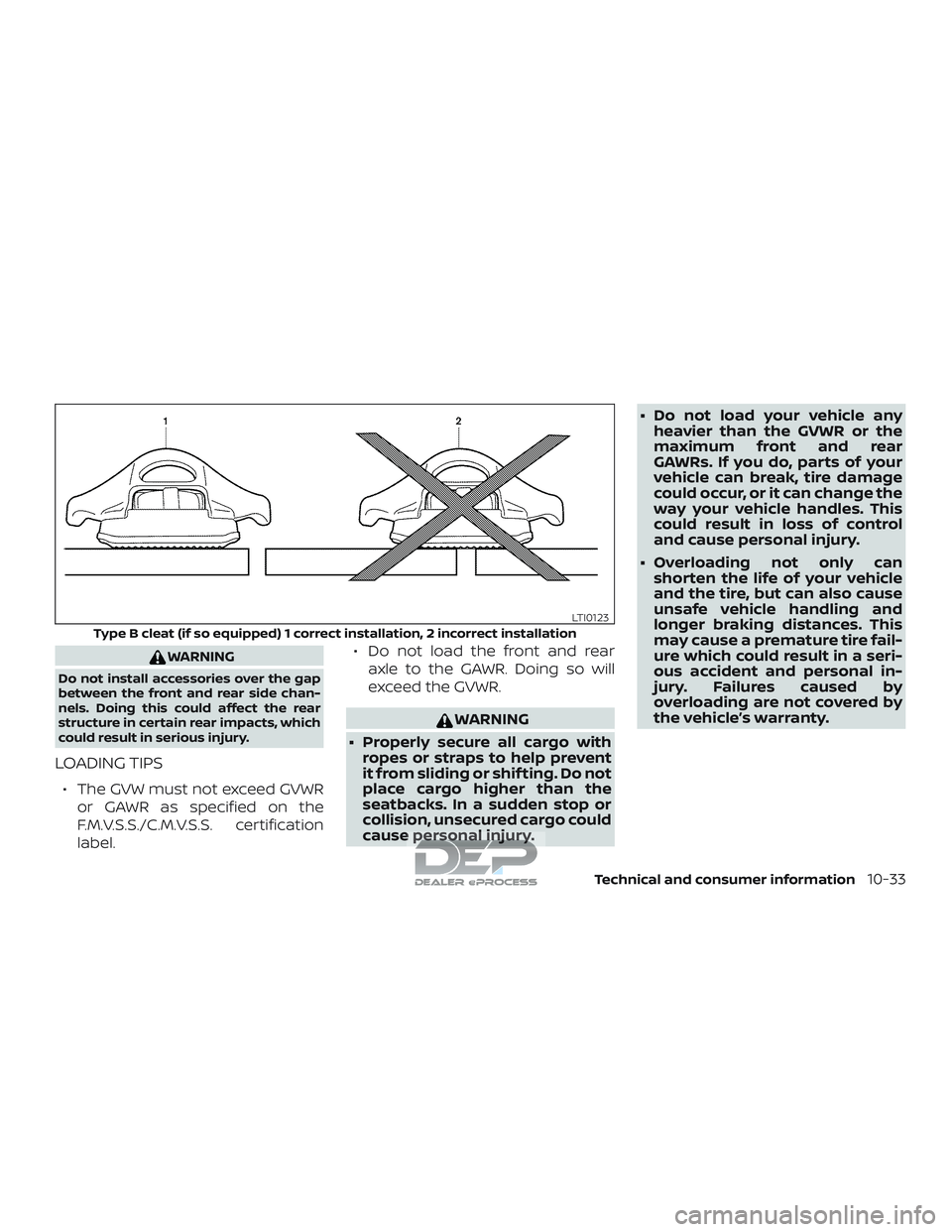
WARNING
Do not install accessories over the gap
between the front and rear side chan-
nels. Doing this could affect the rear
structure in certain rear impacts, which
could result in serious injury.
LOADING TIPS
∙ The GVW must not exceed GVWRor GAWR as specified on the
F.M.V.S.S./C.M.V.S.S. certification
label. ∙ Do not load the front and rear
axle to the GAWR. Doing so will
exceed the GVWR.
WARNING
∙ Properly secure all cargo with ropes or straps to help prevent
it from sliding or shif ting. Do not
place cargo higher than the
seatbacks. In a sudden stop or
collision, unsecured cargo could
cause personal injury. ∙ Do not load your vehicle any
heavier than the GVWR or the
maximum front and rear
GAWRs. If you do, parts of your
vehicle can break, tire damage
could occur, or it can change the
way your vehicle handles. This
could result in loss of control
and cause personal injury.
∙ Overloading not only can shorten the life of your vehicle
and the tire, but can also cause
unsafe vehicle handling and
longer braking distances. This
may cause a premature tire fail-
ure which could result in a seri-
ous accident and personal in-
jury. Failures caused by
overloading are not covered by
the vehicle’s warranty.
Type B cleat (if so equipped) 1 correct installation, 2 incorrect installation
LTI0123
Technical and consumer information10-33
Trending: trunk, air suspension, fuel additives, keyless entry, brake bolt torque, oil level, tire size



